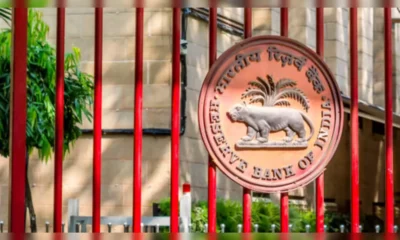Guest Column
Banks vs HFCs – Which Is the Better Home Loan Option?




Anuj Puri
Chairman ANAROCK Property Consultants
After zeroing on a property, buyers need to identify a suitable home loan lender to fulfil their financial needs. Officially, there are two major lenders in the market – banks (including both public and private banks) and housing finance companies (HFCs). To get the best deal, a buyer must select a lender depending on their prevailing interest rates, eligibility criteria, processing fee and other factors.
Both banks and HFCs have their own pros and cons. A closer look…
Banks vs HFCs: The Better Option?
Declaring an outright ‘winner’ among the two options is indeed difficult. Earlier, the steep interest rates of HFCs gave banks an edge. However, now there is a parity between the two as most HFCs offer loans at rates within 8.6%-11.2%, while banks offer loans at 8.3%-10.5%. The gap has significantly reduced and buyers may now consider either option.


Eligibility criteria & process: Rising NPAs over the past years have compelled banks to follow stricter norms for lending. They mandate the submission of several documents. Also, the entire process is time-consuming. HFCs ask for fewer documents and their loans can, therefore, be availed of in a shorter time. However, post the NBFC crisis, HFCs are tightening the norms around home loan disbursements.
Interest rate fluctuations: HFCs are slow to pass on interest rate benefits to borrowers simply because their interest rates are fixed on their average cost of funds since they follow the Benchmark Prime Lending Rate (BPLR) model. Banks follow the Marginal Cost of Funds-based Lending Rate (MCLR) model which is governed by the RBI and ensures that rate cuts are passed on to customers quickly.
Documents to Avail of a Home Loan
Most banks and HFCs ask for similar documents that primarily establish a borrower’s identity, antecedents, address and income. However, banks are more rigid in their documentation, eligibility and credit score assessment as against HFCs. Broadly, the documents include:
- Identity Proof: Voter ID/ Passport /PAN Card/Aadhar
- Address Proof: Electricity Bill/Phone Bill
- Income Proof: Past 3 months’ salary slips, latest Form-16 & IT returns, last 6 months’ salary a/c statement
- Property-related documents (for new homes): Allotment letter/buyer agreement, payment receipts made to the developer
While there is no clear-cut answer to the question of which financial institution to approach for a home loan in the current scenario, it is important to understand and weigh these pros and cons.
-



 News4 weeks ago
News4 weeks agoKW Delhi 6 Mall Onboards New Brands
-



 News4 weeks ago
News4 weeks agoManasum Senior Living Launches IKIGAI GOA, A Senior Living Community in North Goa, in collaboration with Prescon Homes
-



 News4 weeks ago
News4 weeks agoBridging India Divide: Top 5 Tier- 2 Cities to Focus On
-



 News3 weeks ago
News3 weeks agoGodrej Properties Sells Rs 3k cr+ Homes of Godrej Zenith, Gurugram, within 3 days
-



 News4 weeks ago
News4 weeks agoCommercial Realty Gets Tech Savvy: Fast Construction, Enhanced Convenience
-





 News3 weeks ago
News3 weeks agoRBI’s Status Quo on Key Policy Rates to Help Maintain the Real Estate Growth Momentum, Say Industry Stalwarts
-



 News4 weeks ago
News4 weeks agoMultipoint Connection – A Definite Boon
-



 News2 weeks ago
News2 weeks agoOlive Announces Dhruv Kalro as Co-Founder






















